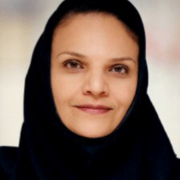Background:
Most quantitative features in analyzing echocardiography images are elicited from the shape of different parts of the heart. One of the challenging tasks in this area is detecting the border between the left ventricle and its wall. Segmentation that is a process to extract the shape of objects in an image is a way to have a better observation of epicardial and endocardial parts of the left ventricle. Today, manual segmentation is performed by expert radiologists in most cases, but there is some research in the field of automatic echocardiography image segmentation by the use of image processing and computer vision methods. Automatic segmentation is desired because it is more accurate and less operator-dependent. It leads to further quantifications such as the measurement of LV volumes, ejection fraction, myocardial volumes, and thickness. It can be also used for evaluating myocardial perfusion by analyzing myocardial intensity changes over time. Due to the intrinsic limitations of echo imaging such as low image intensity, contrast traditional segmentation methods such as edge-based and region-based image processing algorithms could not be accurate enough to overcome the segmentation complexities. Deep learning that is a branch in the computer vision area has been shown to outperform the image processing methods in many tasks.
